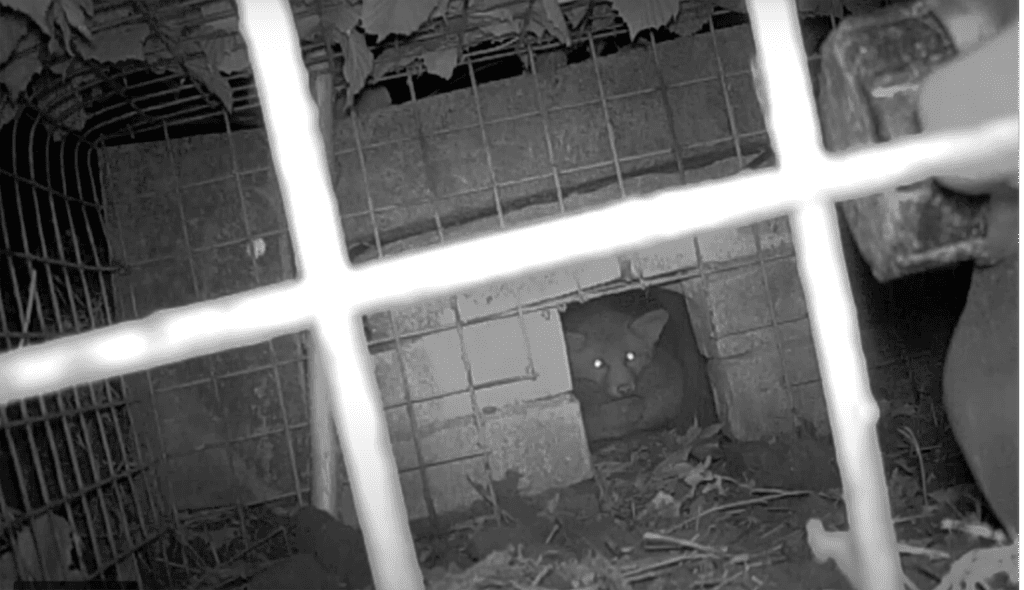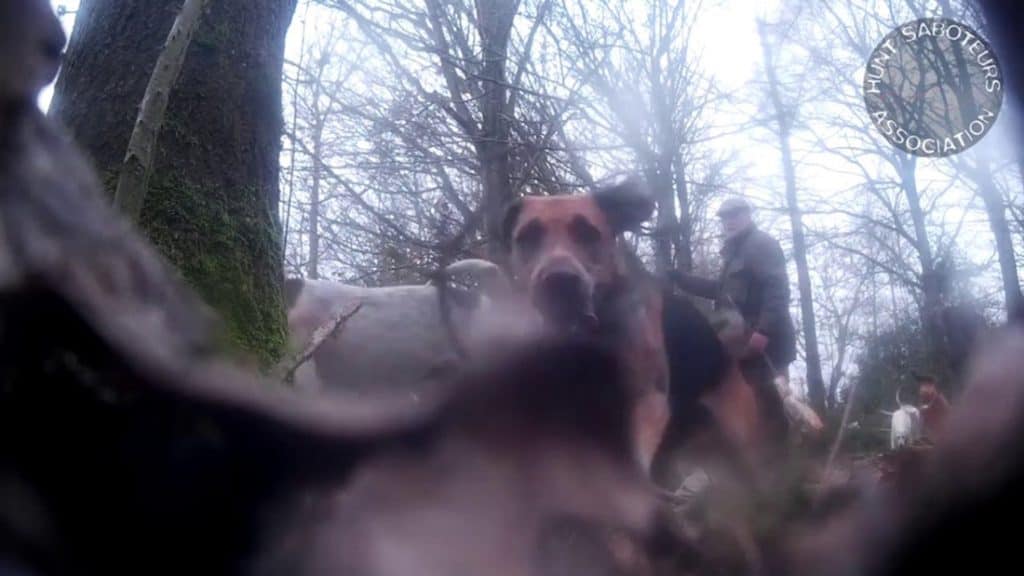

As spring arrives and the foxhunting season comes to an end, we might hope for some reprieve for foxes. Unfortunately, this doesn’t happen. The ‘off’ season is, in fact, one of the busiest times for the hunt terriermen as they prepare a new set of victims for the autumn.
Fox hunting has never been about the random pursuit of foxes across the countryside. In fact, it is a highly organised activity, carefully designed to ensure that there is always a fox for the hunt’s paying subscribers to chase.
Artificial earths are essential to this purpose. These are structures built by the hunt to encourage foxes into hunting areas. They usually consist of an underground chamber connected to two or more tunnels made of 9 “plastic piping. The exit points are often restricted with stone to prevent habitation by badgers. Hunt saboteurs have documented hundreds of artificial earths at dozens of hunts.
Of course, the existence of artificial earths immediately demolishes any ‘pest control’ argument for fox hunting and, since 2005, has provided obvious evidence of illegal activity.

A litter of fox cubs is taken from their mother in May or June and placed in an artificial earth. The orphaned animals are held captive there and fed a diet of chickens or crows. At the age of about twelve weeks, those cubs that have survived – and many do not – will be released and are likely stay in the vicinity of the earth.

All this effort is to provide ‘good sport’ for the paying subscribers the following autumn. When the huntsman needs a fox to hunt, he sends the terriermen into a wood containing an artificial earth. The terriermen will then bolt the fox using terriers or drainage rods … and the hunt begins. The HSA exposed precisely this process at the criminal Kimblewick Hunt.

Artificial earths are found anywhere that fox hunting takes place: from lowland areas to the high fells of the Lake District. They are usually located in woods planted by the hunt. These are almost always named Covert, Spinney, Furze, Halt/Holt, Gorse or Rough and are square or rectangular in shape. The earths are often sited close to the edge of the wood which allows easy access for the terriermen and ensures a bolted fox will run into the open to provide ‘sport.’
Artificial earths can be hard to find. However, quad bike or human tracks, animal bones or flesh, feeding bowls and breeze blocks – used to seal the entrance – are all signs that one is close by.

If you are out and about enjoying the countryside, please keep your eyes open for any evidence of artificial earths. If you find an artificial earth, please make a note of its exact location (what3words is ideal for this) and call the HSA Tip-Off Line: 07443 148 426.
Remember, fox hunting may take a break from April…but the abuse of foxes never really stops.
We are the only organisation that works directly in the field to save wildlife through direct action.
| Cookie | Duration | Description |
|---|---|---|
| cookielawinfo-checkbox-analytics | 11 months | This cookie is set by GDPR Cookie Consent plugin. The cookie is used to store the user consent for the cookies in the category "Analytics". |
| cookielawinfo-checkbox-functional | 11 months | The cookie is set by GDPR cookie consent to record the user consent for the cookies in the category "Functional". |
| cookielawinfo-checkbox-necessary | 11 months | This cookie is set by GDPR Cookie Consent plugin. The cookies is used to store the user consent for the cookies in the category "Necessary". |
| cookielawinfo-checkbox-others | 11 months | This cookie is set by GDPR Cookie Consent plugin. The cookie is used to store the user consent for the cookies in the category "Other. |
| cookielawinfo-checkbox-performance | 11 months | This cookie is set by GDPR Cookie Consent plugin. The cookie is used to store the user consent for the cookies in the category "Performance". |
| viewed_cookie_policy | 11 months | The cookie is set by the GDPR Cookie Consent plugin and is used to store whether or not user has consented to the use of cookies. It does not store any personal data. |